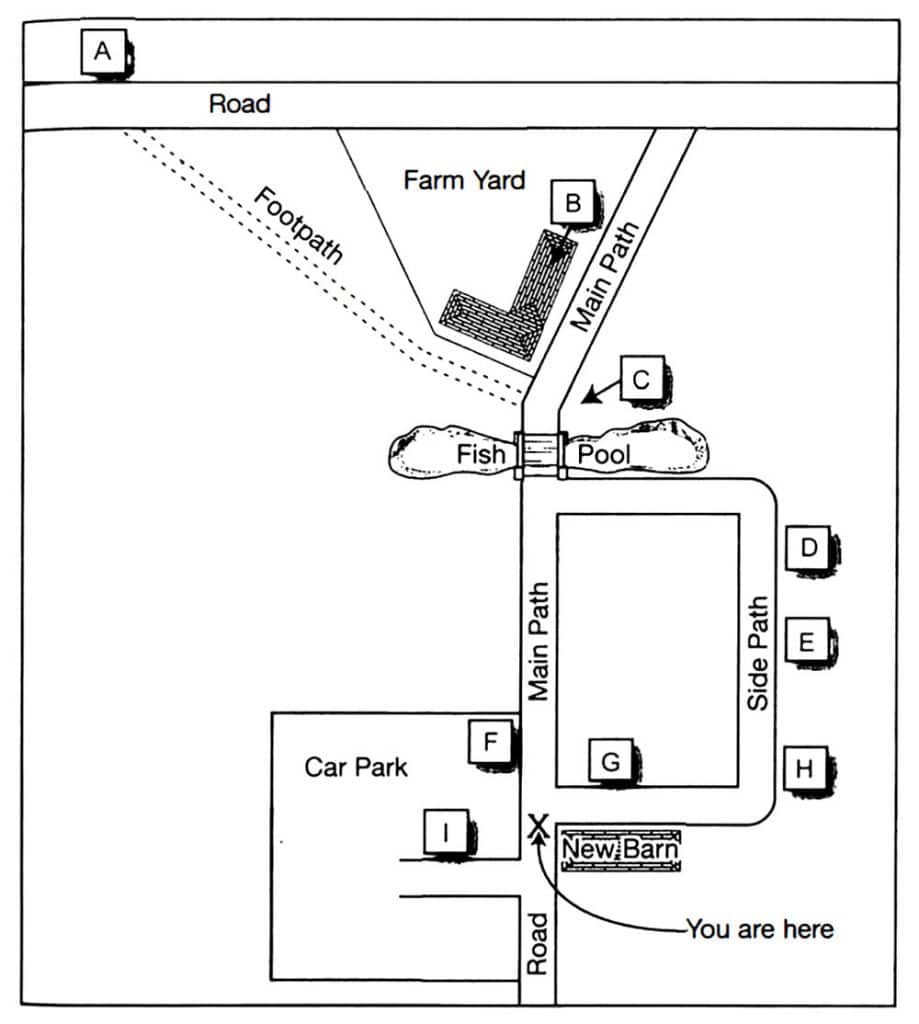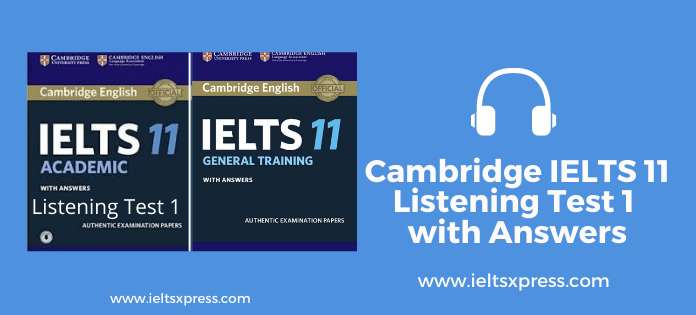Cambridge IELTS 11 Listening Test 1 with Answers
Elevate your listening skills with Cambridge IELTS 11 Test 1. This practice test features a diverse range of topics, including “Hiring a Public Room,” “Fiddy Working Heritage Farm,” “Study on Gender in Physics,” and “Ocean Biodiversity.” By immersing yourself in these authentic listening scenarios, you’ll enhance your ability to understand spoken English, improve your note-taking skills, and build confidence for the IELTS exam.
Cambridge IELTS 11 Listening Test 1 – Section 1
Section 1:
Questions 1-10
Complete the notes below. Write ONE WORD AND/OR A NUMBER.
HIRING A PUBLIC ROOM
Example
• The main hall seats 200
Room and cost
• The (1) _______________ room seats 100
• Cost of main hall for Saturday evening: (2) £ _______________ + £250 deposit (3) _______________ payment is required)
• Cost includes use of tables and chairs and also (4) _______________
• Additional charge for use of the kitchen: £25
Before the event
• Will need a (5) _______________ licence
• Need to contact caretaker (Mr Evans) in advance to arrange (6) _______________
During the event
• The building is no smoking
• The band should use the (7) _______________ door at the back
• Don’t touch the system that controls the volume
• For microphones, contact the caretaker
After the event
• Need to know the (8) _______________ for the cleaning cupboard
• The (9) _______________ must be washed and rubbish placed in black bags
• All (10) _______________ must be taken down
• Chairs and tables must be piled up
Cambridge IELTS 11 Listening Test 1 – Section 2
Section 2:
Questions 11-14
Complete the notes below. Write ONE WORD for each answer.
Fiddy Working Heritage Farm
Advice about visiting the farm
Visitors should
• Take care not to harm any (11) _______________
• Not touch any (12) _______________
• Wear (13) _______________
• Not bring (14) _______________ into the farm, with certain exceptions
Questions 15-20
Label the map below. Write the correct letter A-I, next to questions 15-20.

15. Scarecrow _______________
16. Maze _______________
17. Café _______________
18. Black Barn _______________
19. Covered picnic area _______________
20. Fiddy house _______________
Cambridge IELTS 11 Listening Test 1 – Section 3
Section 3:
Questions 21-30
Choose the correct letter A, B or C.
Study on Gender in Physics
21. The students in Akira Miyake’s study were all majoring in
A physics
B psychology or physics
C science, technology, engineering or mathematics
22. The aim of Miyake’s study was to investigate
A what kind of women choose to study physics
B a way of improving women’s performance in physics
C whether fewer women than men study physics at college
23. The female physics students were wrong to believe that
A the teachers marked them in an unfair way
B the male students expected them to do badly
C their test results were lower than the male students’
24. Miyake’s team asked the students to write about
A what they enjoyed about studying physics
B the successful experiences of other people
C something that was important to them personally
25. What was the aim of the writing exercise done by the subjects?
A to reduce stress
B to strengthen verbal ability
C to encourage logical thinking
26. What surprised the researchers about the study?
A how few students managed to get A grades
B the positive impact it had on physics results for women
C the difference between male and female performance
27. Greg and Lisa think Miyake’s results could have been affected by
A the length of the writing task
B the number of students who took part
C the information the students were given
28. Greg and Lisa decide that in their own project, they will compare the effects of
A two different writing tasks
B a writing task with an oral task
C two different oral tasks
29. The main finding of Smolinsky’s research was that class teamwork activities
A were most effective when done by all-women groups
B had no effect on the performance of men or women
C improved the results of men more than of women
30. What will Lisa and Greg do next?
A talk to a professor
B observe a science class
C look at the science timetable
Cambridge IELTS 11 Listening Test 1 – Section 4
Section 4:
Questions 31-40
Complete the notes below.
Write ONE WORD ONLY.
Ocean Biodiversity
Biodiversity hotspots
• areas containing many different species
• important for locating targets for (31) _______________
• at first only identified on land
Boris Worm, 2005
• identified hotspots for large ocean predators, e.g. sharks
• found that ocean hotspots:
– were not always rich in (32) _______________
– had higher temperatures at the (33) _______________
– had sufficient (34) _______________ in the water
Lisa Ballance, 2007
• looked for hotspots for marine (35) _______________
• found these were all located where ocean currents meet
Census of Marine Life
• found new ocean species living:
– under the (36) _______________
– near volcanoes on the ocean floor
Global Marine Species Assessment
• want to list endangered ocean species, considering:
– population size
– geographical distribution
– rate of (37) _______________
• Aim: to assess 20,000 species and make a distribution (38) _______________ for each one
Recommendations to retain ocean biodiversity
• increase the number of ocean reserves
• establish (39) _______________ corridors (e.g. for turtles)
• reduce fishing quotas
• catch fish only for the purpose of (40) _______________
Cambridge IELTS 11 Listening Test 1 Answers
Practice with Expert IELTS Tutors Online
Apply Code "IELTSXPRESS20" To Get 20% off on IELTS Mock Test
Hiring a Public Room IELTS Listening Answers
1. Charlton
2. £115
3. cash
4. parking
5. music
6. entry
7. stage
8. code
9. floors
10. decorations
Fiddy Working Heritage Farm IELTS Listening Answers
11. animals
12. tools
13. shoes
14. dogs
15. F
16. G
17. D
18. H
19. C
20. A
Study on Gender in Physics IELTS Listening Answers
21. C
22. B
23. B
24. C
25. A
26. B
27. C
28. A
29. B
30. A
Ocean Biodiversity IELTS Listening Answers
31. conservation
32. foods
33. surface
34. oxygen
35. mammals
36. ice
37. decline
38. map
39. migration
40. consumption
Also Check: Should we continue to use Nuclear Energy?




